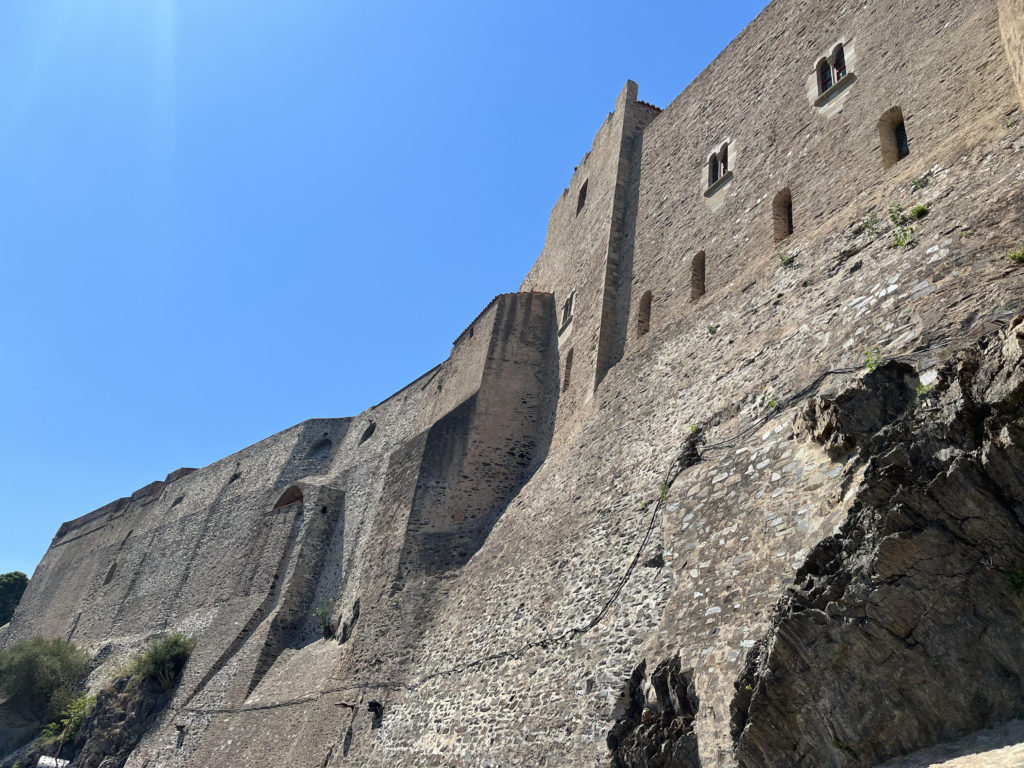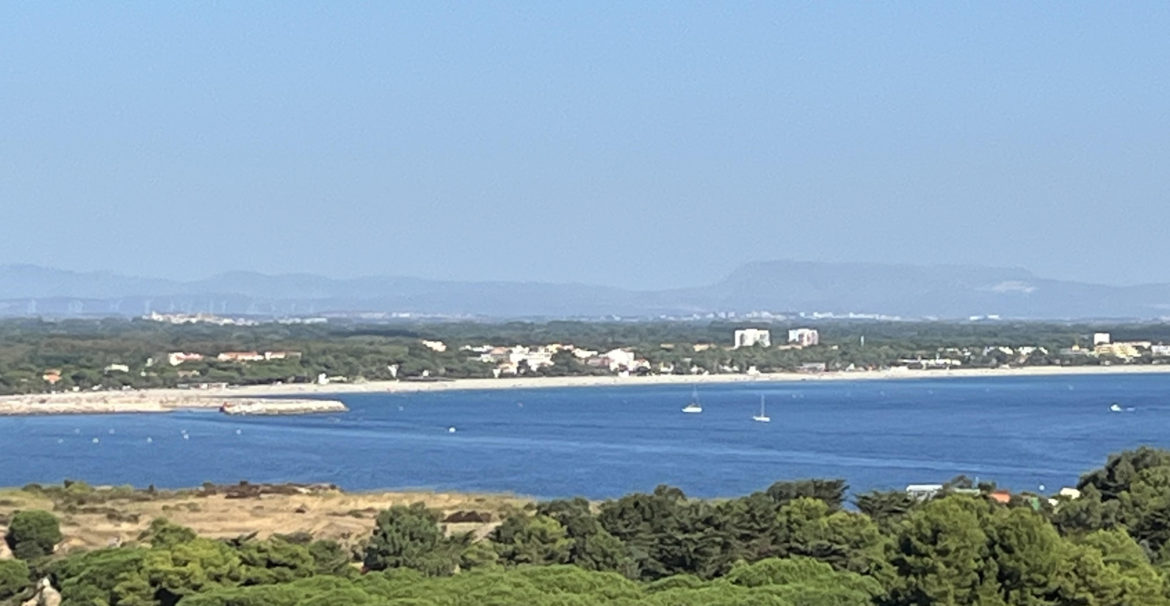On a late summer’s day in August, a migration is taking place in the far north-eastern corner of Spain. With a new school year looming, the AP7 motorway is busy with traffic returning north from the Costas.
The motorway climbs easily through the far eastern Pyrenees and the traffic flows freely until a few kilometres over the border where it snarls up for about 25 minutes on the approach to a toll plaza.
On a warm, sun-kissed day, after this summer’s extreme heat has finally seeped way, it is difficult not to be cheerful here. But as we begin to reach the end of our seven-hour journey from Madrid, we are presented with a site that is a chilling reminder of a very different migration, undertaken in early 1939, in the middle of a punishingly cold winter.
As we swing off the D114 south towards our destination Collioure, we can suddenly see the long sandy beach of Argèles-sur-Mer. It was there, in January 1939, that French authorities built one of a number of internment camps to hold the estimated 500,000 Spanish refugees who fled north to escape the anticipated repression by the nationalist forces of General Franco bearing down on Barcelona. ‘La Retirada’ – the retreat – is one of Europe’s most serious refugee crises, and one of its least known.
There is a second route from Catalonia to Collioure that avoids the queues and the tolls. It hugs the Mediterranean coastline running through a series of pretty seaside towns and villages that make up the ‘Cote de Vermeille’, such as Llanca and Cadaqués and then Banyuls-sur-Mer and Port Vendre.
Even in a modern car this route is hard driving, tracking through winding mountain roads and with precipitous drops towards the sparkling blue Med. It gives a far more realistic impression of the challenges that faced the hundreds of thousands of fleeing Republicans. This terrain is treacherous, rough and unforgiving. While it is some distance from the high Pyrenees, the landscape is still dramatic. At Els Limits, where the motorway crosses the border, the altitude is 250m. Just 50km to the west, the Pic Canigou stands at 2.875m. The sheer physical challenge of La Retirada was daunting for Republican soldiers, never mind the elderly, women, men and children making the journey. Most were on foot, ill-fed, often badly clothed and carrying the last of their personal possessions.
To make matters worse, January 1939 was bitterly cold with snow and sleet falling on the refugees, causing a further deterioration of roads and paths already inadequate to the task. And above them the Nationalist air force and the notorious Condor Legion harried the column all the way to the border.
There, French authorities had expected to receive an exodus, but not on the scale that arrived. They were unprepared and hostile and for a time official border routes remained closed. Ironically, given how close France was to its own war with fascism, the government was fearful that this influx would bring in communists and others with ideas dangerous to France. Many of the arrivals were hardened fighters. Indeed, many would later end up helping France’s war effort and later join the resistance.
As a result of the chaos and its hostility, the French government hastily erected camps to hold the refugees at Argèles and in places further north including Rivesaltes and Saint-Cyprien. The conditions were appalling. While a few huts were erected to give shelter from the cold and the wind, many of those held had no alternative but to dig into the sand to stay out of the worst of the conditions.
Initially at least there was little fresh water, poor food supplies and no sanitation. Dysentery was a huge problem. It is estimated that as many as 15,000 Spaniards died after reaching France. The survival rate of children was particularly poor.
Some of the camps had lives that went on into the Vichy regime following France’s surrender to the Nazis. By then some 200,000 refugees had returned to an uncertain fate in Franco’s Spain while others dispersed in France and fled to other countries including Latin America.
Today there is relatively little evidence they were ever there. The area behind the golden sand of Argèles now hosts camping sites, hotels, restaurants and funfairs. There are some reminders of what passed here, but they need to be sought out.
We find more evidence of La Retirada in the castle at Collioure where our excellent guide, Leo, tells the story.

Some 400 of the most ‘dangerous’ of the refugees were held in the castle, also in difficult conditions in the corridors that run underneath. The castle now houses an exhibit about the events of 1939, detailing the difficult retreat, the unpreparedness, suspicion and hostility of France and the fate of the marée humaine, the human tide. Somewhat to my surprise, the exhibition has no hesitation in labelling the camps, “Concentration Camps”, nor in expressing the shame of them.
At the end of the low-ceilinged, narrow room that houses the exhibition is a small cell that displays a few poignant personal items belonging to refugees, including a suitcase, a damaged pair of shoes and a cot.
The Spaniards were not the last detainees of the castle whose mid-20th Century history offers a microcosm of Europe’s turmoil. By 1942 it housed Resistance fighters and other enemies of the Nazi-Vichy regime, but by 1944 the tables had turned and it was the Nazis occupying the cells.
Even at 80 years removed from the end of the Spanish Civil War, there is relatively little in the way of physical monuments to commemorate such an influential, violent and traumatic moment in its past. And so perhaps it’s no surprise that La Retirada, a trauma for one nation and a stain for a second, is so little known and marked. But it’s now impossible to cover that ground in the shared Pays Catalan without feeling the ghosts of the past.
Collioure is also known as the last resting place of the great Spanish poet Antonio Machado, who died there in February 1939 after being evacuated from Barcelona. He is commemorated in the house in which he died, just behind the hotel we stayed in.
It seems fitting to leave the last word to him:
Traveller, the road is only
your footprint, and no more;
traveller, there’s no road,
the road is your travelling.
Going becomes the road,
and if you look back
you will see a path
none can tread again.
Further reading: a fictional account at life in the concentration camp in Argeles can be found in Isabel Allende’s book, A Long Petal of the Sea.

